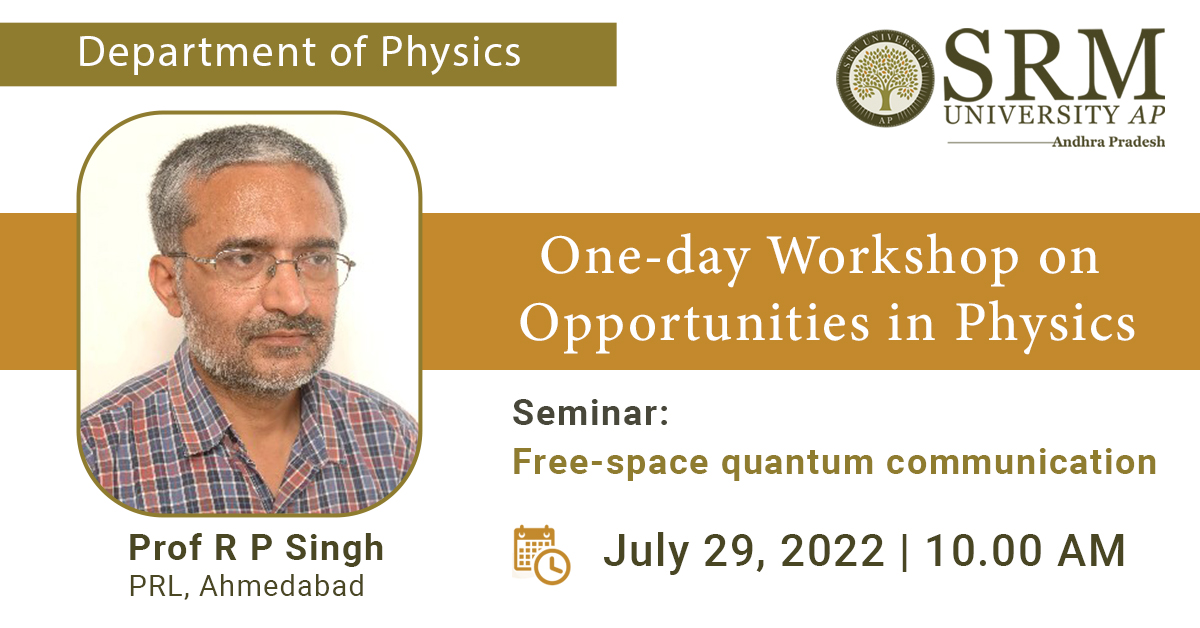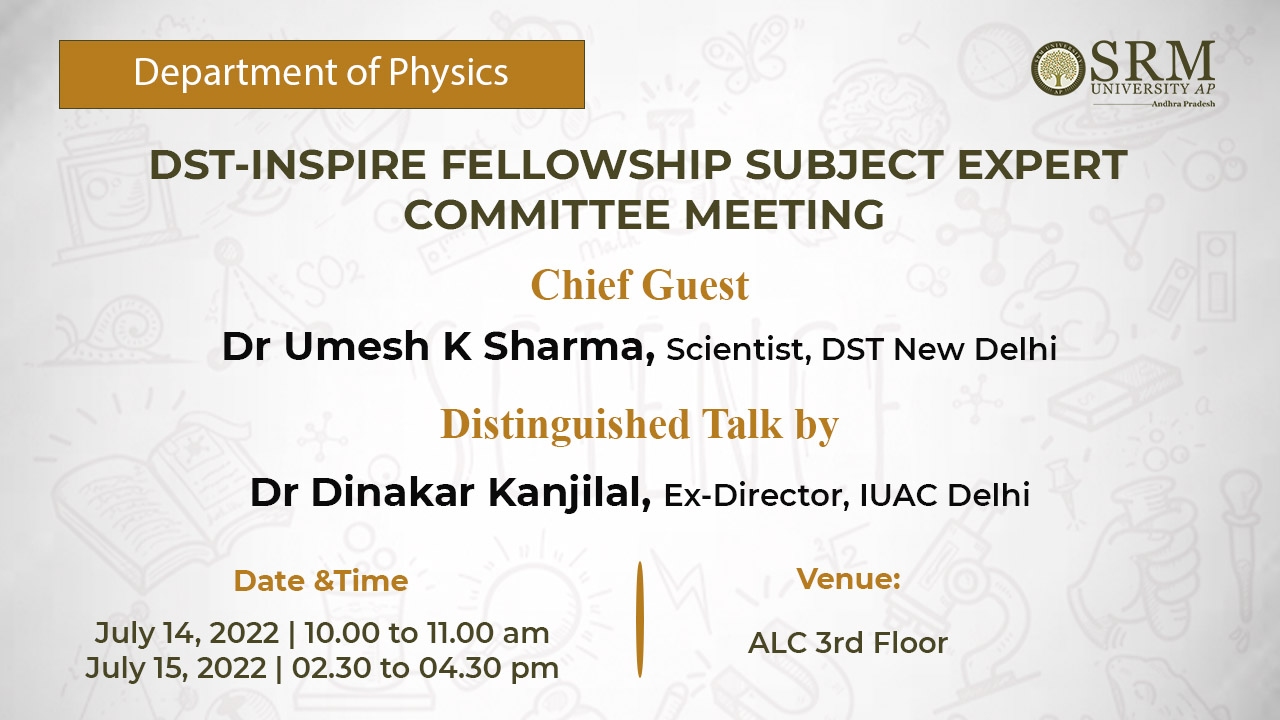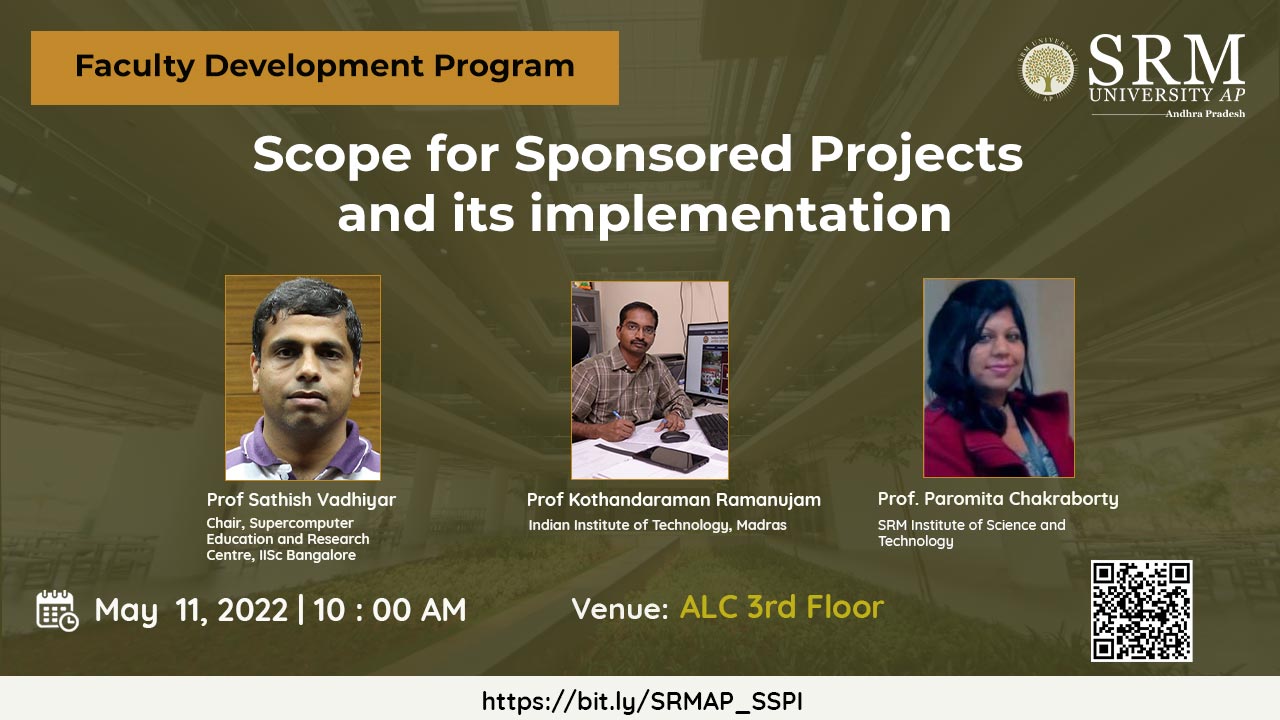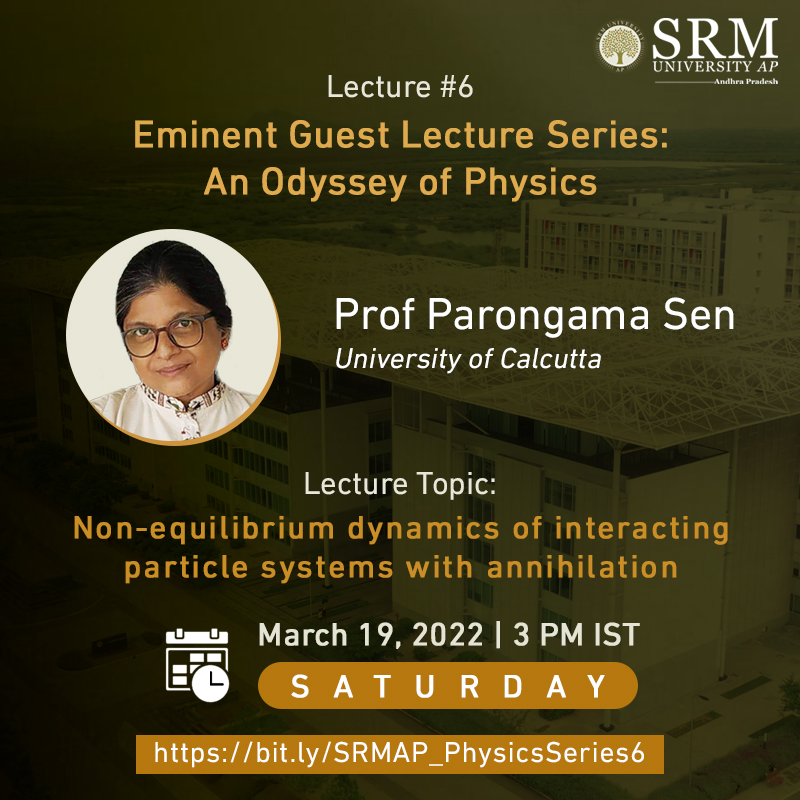Past Events
- Prediction of breakdown in disordered solids August 11, 2022

The Department of Physics is glad to announce that Assistant Professor Dr Soumyajyoti Biswas and his PhD scholar Ms Diksha have published their article “Prediction of imminent failure using supervised learning in a fiber bundle model” in the Q1 journal, Physical Review E. Prediction of breakdown in disordered solids under external loading is a question of paramount importance to the stability of buildings and bridges to earthquakes. The researchers used numerical simulations of a model of disordered solids and recorded the time series of the avalanche sizes and energy bursts. They propose that a systematic analysis of these time series using supervised machine learning can predict the time of failure. Interestingly, the most important feature for such predictions turns out to be the measures of how unequal the avalanche sizes are.
Applying external stress on disordered materials beyond their mechanical limits results in their fracture. Hence it is important to know the limit or how the material behaves as it approaches the limit and the factors that influence it. The failure properties of materials are very distinct from other properties such as elasticity, in the sense that their predictions are not always straightforward. Predicting the failure in driven disordered systems is a long-standing problem in physics, engineering, and earth sciences. So, for understanding the fracture process and predicting the failure properties of the materials, a mathematical model (fibre bundle model) has been used.
They introduced the disorder to the system and generated the time series of avalanche size and energy bursts. Some inequality indices i.e., Hirsch index (h), Gini index (g) and recently introduced Kolkata index (k) were measured for the response statistics of the driven systems. These social inequalities are usually represented by the Lorenz function L(p), where p fraction of the population (events) possesses L(p) fraction of total wealth (avalanche mass) when the population (avalanche events) are arranged in the ascending order of their wealth (size). Based on these time series, the machine learning algorithm can predict the prior failure time of the system. So, they have used a supervised machine learning algorithm (with the above-mentioned indices as some of the features) to predict the failure time of the model. They observed that these inequality measures play an important role in making predictions.
Prediction of imminent fracture has its implications in a wide range of disciplines, including stability of mechanical structures (buildings, aircraft, bridges etc.), extraction of oil (fracking) to the largest scale of mechanical failure i.e., earthquakes. Here a supervised machine learning approach is used to make such predictions in numerical models. However, with the important features identified here for such predictions, such research can carry out similar predictions for experimental data. A follow-up of this work is being carried out by Ms Diksha with a group in Spain regarding the experimental verification. Their future research plans include applications of the methods developed here to be applied to real-life physical structures for their stability analysis and predictions of impending catastrophes.
Illustration 1: A schematic diagram of the Lorenz function L(p)is shown, where L(p) denotes the cumulative fraction of the avalanche mass contained in the smallest p fraction of avalanches. If all avalanches were equal in size, this would be a diagonal straight line, called the equality line. The area between the equality line and the Lorenz curve (shaded area),therefore, is a measure of the inequality in the avalanche sizes. Two quantitative measures of such inequality are extracted from here, the ratio of the shaded area and that under the equality line (Gini index, g) and the crossing point of the opposite diagonal – from (0,1) to (1,0), shown in dashed line,and the Lorenz curve, giving the Kolkata index, k. 1 − k fraction of avalanches contain k fraction of the cumulative avalanche mass.
Continue reading → - Explore the world through Physics July 20, 2022
“Physics is about questioning, studying, probing nature. You probe, and, if you’re lucky, you get strange clues” – Lene Hau

Are you a Physics student dreaming of the exciting possibilities and opportunities the subject may present you with? Well, your passion for physics is sure to gift you with endless opportunities to explore the world. No matter the type of career you choose, the magic of Physics will remain an integral part of your life. You could be an astronaut, a teacher, an engineer or a researcher, Physics will never fail you to take you to greater heights and depths of your interest.
The Department of Physics brings to you an exciting workshop on “Opportunities in Physics” with Prof R P Singh from Physical Research Laboratory, Ahmedabad on July 29, 2022 at 10.00 am. Students pursuing advanced undergraduate and postgraduate programmes in Physics in various universities and colleges in the vicinity are invited to attend the workshop, visit on-campus research facilities, and interact with the speaker and the faculty. The keynote speaker, Prof R P Singh will give a seminar on “Free-space quantum communication”, and various presentations will also be organised as part of the workshop.
This is an excellent opportunity for the students to create a deeper perspective on the scopes and opportunities of pursuing Physics. They can also get in touch with experts in the field and experience the latest innovations during laboratory visits. Having a broader understanding of the infinite possibilities of the subject will certainly help students make an informed decision as to how to move ahead and grab the right opportunity.
Continue reading → - DST-INSPIRE fellowship expert committee meeting to be held at SRM University-AP July 14, 2022

“Innovation in Science Pursuit for Inspired Research” (INSPIRE) programme is a flagship initiative of the Department of Science and Technology (DST) to persuade young and talented science enthusiasts to pursue various fields of sciences and instigate quality research to strengthen the Science and Technology network of the country.
INSPIRE fellowship is one of the important components under the purview of INSPIRE programme to attract Science graduates to undertake Doctoral research in both basic and applied sciences. The fellowship enables the aspirants to pursue research at any recognized university or institute in India.
SRM University-AP is glad to host the subject expert committee meeting on July 14 & 15, 2022, to select the meritorious candidates for the DST-INSPIRE fellowship 2022 to pursue PhD in physics at any recognized institute across the country. During the meeting, the expert committee will list out the most deserving candidates among scores of applicants from all over the country.
As part of the event, an interactive session has been scheduled with the eminent scientist Dr Umesh K Sharma, DST New Delhi. He would cast light on the scopes and opportunities of pursuing doctorate with an INSPIRE fellowship. A talk by Prof Dinakar Kanjilal, Ex-Director IUAC Delhi, will also be organized to give the faculty and students a comprehensive understanding of the same.
Distinguished Members of the DST INSPIRE Meeting
Dr Umesh K Sharma
Dr Dinakar Kanjilal
Dr G Vijaya Prakash
Dr Anandamayee Tej
Dr Rajendra
Dr Arijit Chowdhuri
Continue reading → - Scope for sponsored projects and its implementation May 10, 2022

The Department of Physics is organising a Faculty Development Program on ‘Scope for Sponsored Projects and its Implementation’ with eminent academicians, Prof Sathish Vadhiyar, Chair, Supercomputer Education and Research Centre, IISc Bangalore and Prof Kothandaraman Ramanujam, Indian Institute of Technology, Madras.
Date: May 11, 2022
Time: 10.00 am
Venue: ALC 3rd Floor
Discussing the scopes and challenges of such sponsored projects is inevitable as it determines the progress in its execution. Documenting a list of the project goals, deliverables, tasks, costs and deadlines is, therefore, an important part of this process. This will help in establishing the objectives of the project, analysing its limits, and providing a roadmap to move ahead.
Prof Sathish Vadhiyar will deliver a talk on the National Supercomputing Mission (NSM) Program which was introduced by the government of India with an aim to connect national academic and R&D institutions with a grid of high-performance computing facilities. This is an effort to improve the number of supercomputers owned by India. Prof Kothandaraman Ramanujam will provide a brief awareness regarding consultancy projects set up with the industry through his talk. The session will be wrapped up by Prof Paromita Chakraborty who will give an overview of funded projects and bilateral projects.
Join here for an informative session.
Continue reading → - Non-equilibrium dynamics of interacting particle systems with annihilation March 14, 2022
The Department of Physics is going to host the sixth instalment of the Eminent Guest Lecture Series: An Odyssey of Physics on March 19, 2022, at 03.00 PM IST with Prof Parongama Sen from the University of Calcutta as the keynote speaker. Dr Sen will be speaking on” Non-equilibrium dynamics of interacting particle systems with annihilation”.
Prof Parongama Sen has been teaching at the University of Calcutta as Professor since 2008. She received her PhD from Saha Institute of Nuclear Physics, Calcutta in 1993. She was also awarded APS-IUSSTF Professorship in 2012-13. Her research interests include statistical physics: phase transitions and critical phenomena in magnetic systems, networks, quantum systems, percolation etc. and dynamical phenomena in complex physical and social systems.
Non-equilibrium dynamics of interacting particle systems with annihilation
There has been tremendous research activity on the evolution of systems comprising of interacting particles in Statistical Physics over the last few decades. This lecture particularly considers those systems in which the particles (also called reactants) may get annihilated instantaneously upon contact or merged as a single species, both of which reduce the particle number. Some of these processes have a one-to-one correspondence with the coarsening dynamics of spin systems and play an important role in the development of non-equilibrium Statistical Physics.
Usually, one considers diffusive motion when the particles move freely, and some known results in this context will be discussed. Here, the speaker notes that the dynamics may also be considered in terms of population densities rather than individuals and examples include models of epidemic spreading.
Finally, she will focus on a model in which the reactant particles are driven by a dynamic bias that radically changes the scaling behaviour of the relevant quantities. The results will be presented for such a system, highlighting the microscopic dynamics, which reveal a crossover behaviour.
Register here for an informative session with Prof Parongama Sen.


